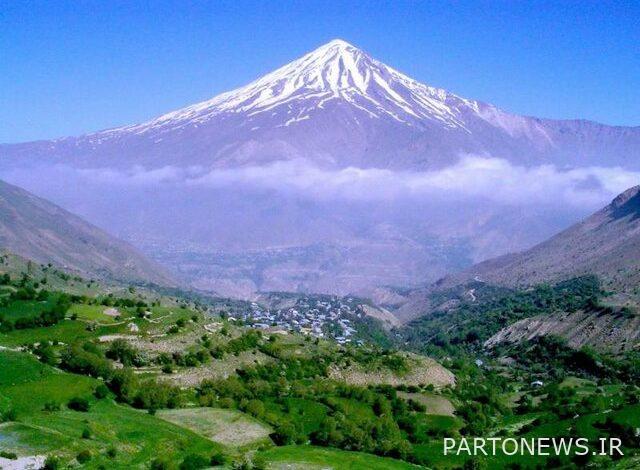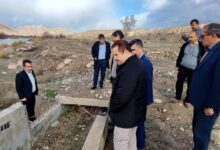Damavand Peak in Olinha Club / the first natural work that reached the national register

Today, July 4 (July 13) is the national day of Damavand. A day that is linked with one of the mythical mountains of Iran, but this beautiful climate has been facing various threats in recent years, such as dedication to mining and the lack of attention of some mountaineers to environmental principles.
The mountainous areas of the world have been the bed and origin of very valuable and original civilizations. Currently, mountains make up one-fifth of the earth’s surface, they are the habitat of at least one-tenth of the world’s people, one-third of the world’s people depend on mountains for various aspects such as food, electricity, wood, and minerals, and half People of the world look to mountain watersheds to meet their water needs. Mountains are water sources that themselves cause snow and rain, strengthen underground water and form rivers. The mountains are also called the freshwater towers of the world.
Mountains have a special importance in our country, and about 30% of the country’s area is made up of mountains, and in terms of natural geography, if there were no mountains in the plateau of Iran, water and forests would not have formed.
One of the most important mountains in Iran is Damavand, which is located in the north of Iran and on the border of Mazandaran and Tehran provinces. This mountain has a height of 5610 meters and is known as the highest mountain in Iran and the Middle East and the highest volcanic mountain in Asia. This mountain is located in the south of the Caspian Sea, 69 km northeast of Tehran and 26 km northwest of Damavand city. Mount Damavand is a dormant volcano with several sulfur springs and hot springs. This mountain was formed about 38 thousand 500 years ago. Therefore, due to the importance of this mountain, the day (13 July) was named Damavand National Day.
Abbas Mohammadi said about Mount Damavand: Mount Damavand has been registered as a national natural monument in the Environmental Protection Organization since 2001. Since 2007, the cultural heritage organization of Damavand has registered it as a national monument. Damavand is the first national natural work that was registered in the cultural heritage organization. Before that, only historical buildings and enclosures were registered in this organization, and after Damavand, natural works were also registered. All over the world, natural works are recorded in cultural heritage because civilization is formed in nature.
He emphasized: “Unfortunately, the registration of natural works does not have a strong and necessary support, that is, the organizations of cultural heritage and environment did not protect and fully support these registrations.” Mount Damavand is struggling with various management problems, as a result of which it faces many challenges.
Challenges and damages that threaten Damavand
In another part of his speech, the director of the Mountain Watch Association, referring to the environmental features of Damavand such as its animal species, said: Damavand has a rich collection of wildlife. Among its key species, we can mention the goat, ram, and sheep, whose habitat has been moved to very high altitudes due to the large and extensive introduction of livestock and human pressures, which leads to the lack of food in their living area and the risk of extinction. It brings these types.

In addition to the excessive grazing of livestock, he listed the damage to the country’s watersheds and mining among the problems and challenges of mountains such as Damavand and water mines, and clarified: the property of water retention in the mountains has been disrupted or lost due to these issues.
According to Mohammadi, one of the destructions that take place based on human activities is that ranchers use various types of plants and plants that have branches and wooden parts to provide fuel for cooking food and preparing tea. This issue is very worthy of consideration because in a country that is rich in oil and gas resources, a system has not yet been implemented so that ranchers do not exploit the valuable plants of pastures for fuel and personal consumption.
How to take care of our mountains and capital?
Considering that today climbing is done in very large groups and in summer up to several thousand people settle in the slopes of Damavand in one day, these points are very important to have rules for climbing. Referring to this article, Mohammadi stated: climbing in the right season, determining the number of climbers to climb each route, refraining from increasing the number of climbing routes and the necessity of climbing through clean roads, refraining from creating a side road, and the obligation of people to return the produced waste. And how to manage waste is one of the things that needs to be formulated and applied.
According to Abbas Mohammadi – the director of the Mountain Watch Association – we do not have specific and specific instructions about any of these cases, and regulations are not applied either. Some mountaineers are also indifferent or careless about these issues, but according to the laws compiled, mountaineers must climb in a certain season, in a certain number and in compliance with the specified rules, in order to minimize the damage to the mountains.
Considering the importance of this ecosystem from an ecological and cultural point of view, it is necessary to protect this valuable ecosystem because its protection means preserving and maintaining a valuable climate.


